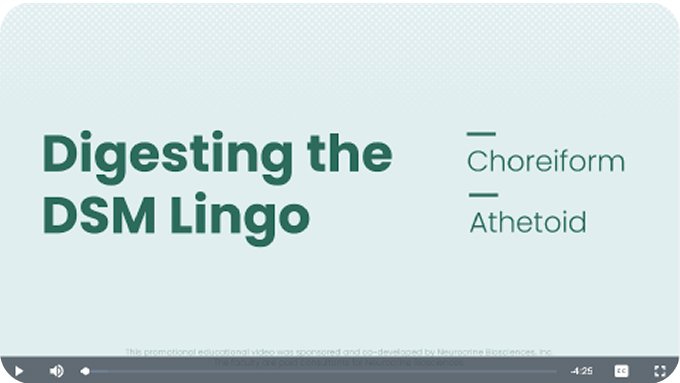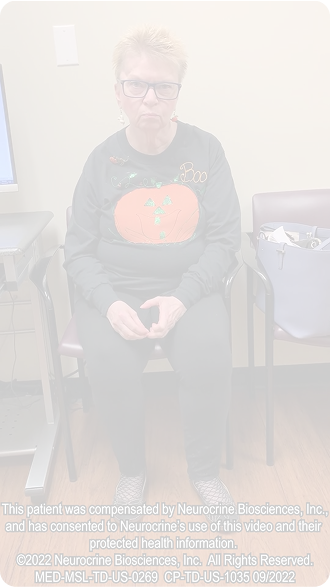

~4 mins
•Jan 2025
Digesting the DSM Lingo

This video features a brief clip from an HCP-patient interaction and is not a complete formal exam.
Would you count the movement(s) highlighted in the video toward this patient’s AIMS score?
Correct!
Yes: The movements in the video are consistent with TD and should be rated on the AIMS.
Incorrect!
Yes: The movements in the video are consistent with TD and should be rated on the AIMS.
Expert Faculty Commentary

Robert A. Hauser
MD, MBA, FAAN
Professor
Department of Neurology
Director
Parkinson's Disease and Movement Disorders Center
University of South Florida
Tampa, FL

Jonathan M. Meyer
MD
Professor
Voluntary Clinical
Department of Psychiatry
University of California San Diego
La Jolla, CA
This patient has a complex set of movements that must be analyzed separately. She has nonrhythmic lip pursing and tongue movements that are classic tardive dyskinesia symptoms, which would be rated on the AIMS. She also has stereotypic hand movements (eg, clasping, rubbing) and rhythmic lower extremity movements (inward motion of the ankles, more so on the right), which are also consistent with TD and should be rated on the AIMS. Further examination and inquiry about the “fidgety” foot movements is important as there may be an element of akathisia. This would depend on whether the patient has an urge to move. If this was absent, the movements would be rated on the AIMS.

Richard M. Trosch
MD
Associate Professor
Department of Neurology
Oakland University Medical School
Rochester, MI
This video shows hand wringing and intertwined digits, “fidgety” foot movements with foot tapping, lip protrusion and puckering, head nodding, and macroglossia (enlarged tongue) that suggests tongue movements. These movements are consistent with tardive dyskinesia and would be scored with the AIMS exam.
This patient has multiple types of movements commonly seen in tardive dyskinesia. She has increased expression of the “normal” movements of hand clasping and rubbing, which would be characterized as stereotypies and rated on the AIMS scale. She also has nonrhythmic, nonpatterned abnormal hand movements that would also be included in the AIMS rating. On voluntary protrusion of the tongue, she has nonrhythmic, nonpatterned random tongue movements that would also be rated on the AIMS. She also has patterned and repetitive lip puckering that should be included in her AIMS score. Finally, her lower extremities show patterned, nonrhythmic movements with inversion (“pulling”) at both ankles; more on her right than her left. All of these movements would be included in her AIMS rating.